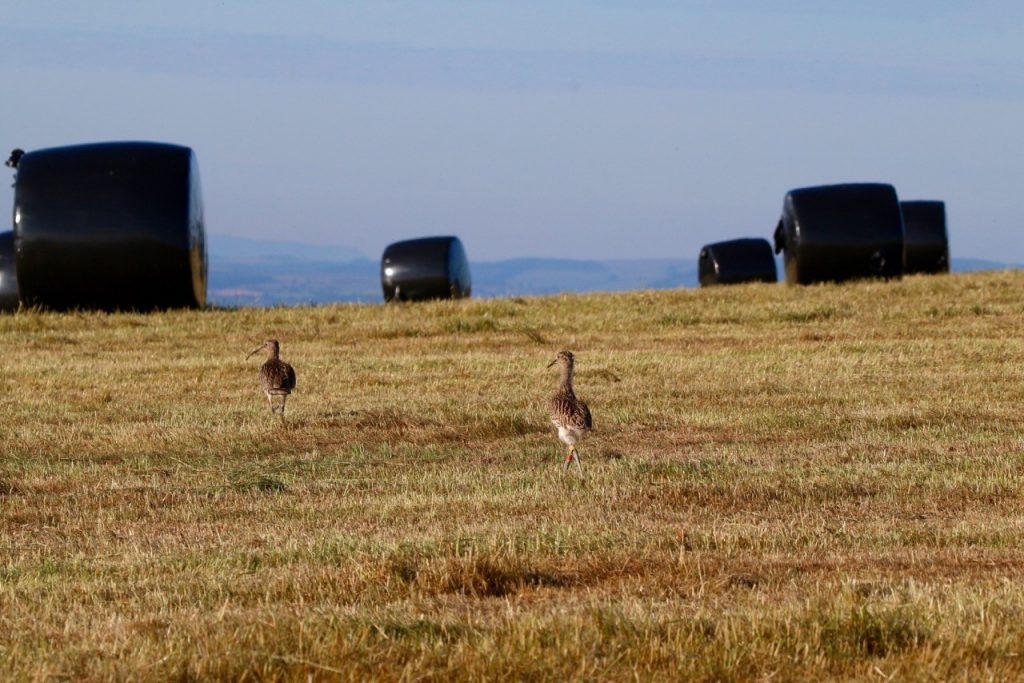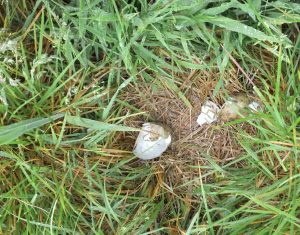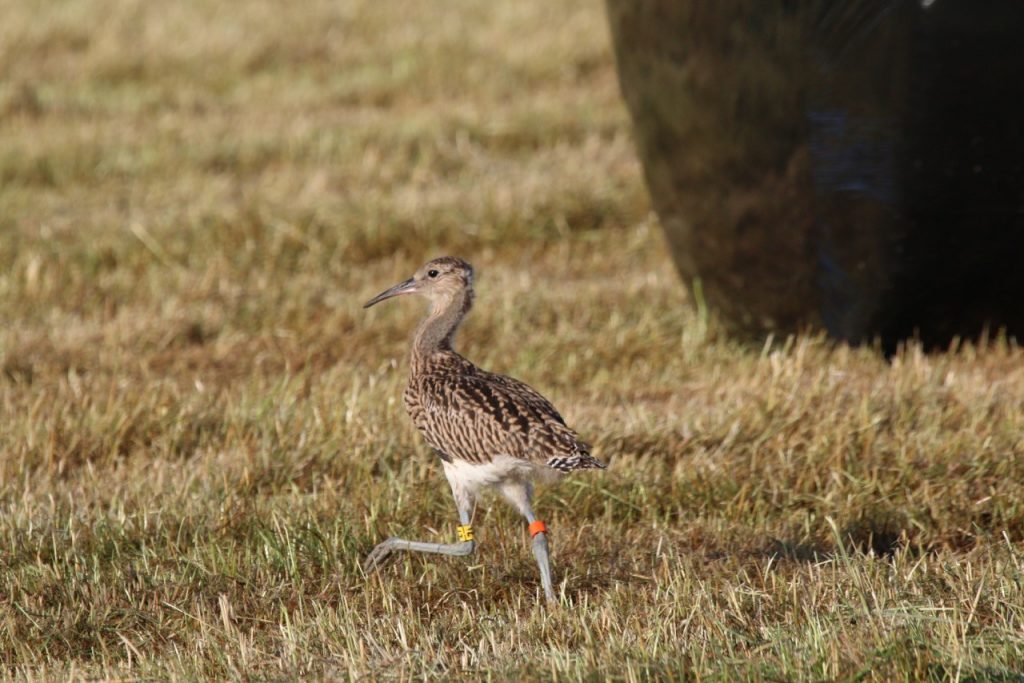Did any chicks survive?
One morning at the end of the season, I received an email from a farmer in Wales to say that they had seen ‘their’ curlew family flying greater distances from the farm, and now they have disappeared. Phew – we now know that some chicks have fledged successfully and stand a much greater chance of surviving. Their first two years will be spent on the coasts or estuaries before hopefully returning to breed within the Shropshire Hills and Welsh Marches. Just on this one farm, the curlew nesting and chick rearing has been like a mini saga.

It is hard to say precisely how many chicks survived. 28 were hatched from the 22 nests that we monitored closely and there were three broods of chicks that we observed to near fledging or fledging stage. The radio tags did what they are supposed to do and dropped off as the chicks grew adult feathers to replace their downy chick feathers, but this made it all the harder to track the chicks and we cannot be absolutely sure how many will reach adulthood protected by the relative defence of good flight. The numbers could range from 3 (based on chicks we saw recently) to 7 or 8 (based on adult observation and knowledge of chick numbers before the tags dropped off).
Although these are modest numbers, our findings from nest monitoring over 2015 and 2016 had demonstrated that no chicks were surviving at all, so it does mean that our interventions based on findings thus far are starting to help. It is a big step forward for the project. We have also learned a lot about chick behaviour in our short time observing them.
We are most grateful to everyone who has helped these birds through working with us to protect their nests or chick habitat. The Curlew Country Project is in its third year, but those new to working with us are daunted by the amount of effort that goes into achieving these small successes and are understandably disappointed by nest failure, which the project team have had to become more used to dealing with. It is tremendously re-assuring now for the Curlew Country project to know that the efforts to date seem to have started to achieve a reverse in the trend of total chick loss, which motivates us to continue to the next phase of aiming to get numbers up to a level that sustains the population and then reverses decline.
What is causing a problem for the chicks?

Based on the findings of our nest monitoring over the previous two years (where it was discovered that most nests failed at egg stage mainly due to predation), this year we intervened to prevent egg failure by putting electric fencing around individual nests and implementing lethal fox control over part of the area.
Once the chicks hatch there is a whole new raft of dangers for them to face. They become more vulnerable to fox and badger predation outside the relative safety of the fence. Avian predators remain on the look-out as well. At this stage the chicks, which are not actually fed by adults but roam widely under the careful watch of at least one parent, become much more vulnerable to being mixed up with dangerous farming operations. It would be much easier to help a brood that remained in one field on a small site, but the sightings of chicks this year are starting to give us insight into the considerable distances they cover. We have also observed that even when chicks start to fly they do not necessarily fly away from approaching danger but might still crouch down and hide.
As well as the field work we have hosted a lot of visitors from other projects across the UK keen to learn more about the work that we are doing. They have included:
Sam Franks, Research Ecologist, British Trust for Ornithology
Dr Geoff Hilton, Head of Conservation Science and Nigel Jarrard, Head of Conservation Breeding from the Wildfowl and Wetlands Trust at Slimbridge
Mary Colwell Hector, Mike Smart and Phillip Sheldrake from the Call of the Curlew Slimbridge Symposium Group
We have also trained a few people who have come out with us to learn how to find curlew nests in other areas of the UK or outside the scheme boundaries.

We have successfully applied for a licence to incubate eggs which should start next year.
We have also obtained a licence to fit gps tags to four adult curlew.
Then of course there was Curlew Cam…
There is a great deal more that we need to know before we can formulate plans to help more chicks to survive in the longer term, but we are hopeful that we can cautiously say:
‘It’s chick time’
Amanda Perkins, Curlew Country Project Manager
